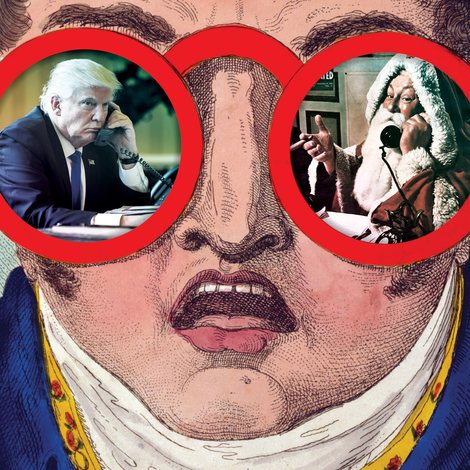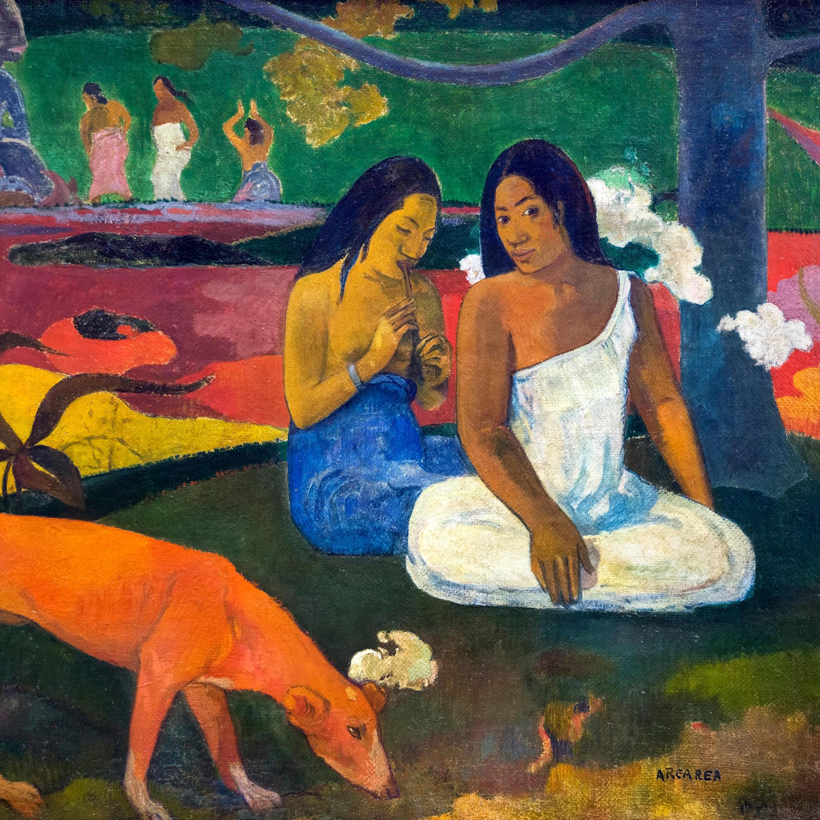Sue Prideaux’s Wild Thing is wise, engaging—and the first biography I’ve read that elects to disprove rumors of syphilis on its preface’s opening page. (Thanks to forensic testing of four of Paul Gauguin’s “heavily” decayed teeth. As if to ensure maximum indignity, they were found in an old jar he evidently liked to drink from.) Poor Gauguin, that it should come to this, more than 120 years after his death, alone, half blind, and racked with pain, in French Polynesia.
Gauguin’s family certainly didn’t advertise or champion convention. His father, Clovis, was an anti-Bonapartist journalist, and his French-Peruvian grandmother, Flora Tristan, published her diaries under the title—as Gauguin might have called his own journals—Peregrinations of a Pariah (1838). She wrote the socialist tract The Workers’ Union (1843) and became, in Prideaux’s words, “an icon of the French feminist movement.”

Dubbed “Madame Anger” by the French press, Flora discovered that her husband, the printmaker André Chazal, had been sexually abusing their daughter, Aline. She successfully brought charges of incest against him and reverted to her maiden name. André responded by stalking, harassing, and, in 1838, shooting Flora. She survived, but the bullet was lodged too close to her heart to be removed and most likely shortened what remained of her life. André was sentenced to 20 years’ hard labor.
Flora died, aged 41, in 1844. Four years later, Aline, whose guardianship the novelist George Sand briefly assumed, gave birth to Gauguin in Paris. The following summer, Aline, Clovis, Gauguin, and his sister, Marie, left for Peru to claim an inheritance from Flora’s paternal relatives. In terms that would reverberate in Gauguin’s imagination, Prideaux relates that Clovis thought of Peru—which he did not live to see—as “idealistic and beautiful. He was taking his family back to a pre-industrial country, to a new dawn in whose light he might fight for modern democratic values.” To “democratic” add artistic, social, and sexual, and you have something like Gauguin’s Tahitian ethos.
He returned to France with Aline and Marie in 1855. Over the course of their sojourn in Peru, Gauguin imbibed Aline’s eccentric—by contemporary standards—regard for native culture. He particularly came to admire her collection of pre-Columbian works of art.
The self-proclaimed “savage from Peru” was sent to boarding school in 1859. While it is hard to credit Gauguin under the heel of Catholic schoolmasters, he profited from the rigorous study of the classics and religion. (A catechism he heard then, “Where do we come from? What are we? Where are we going?,” would inspire one of his finest, most profoundly mystical paintings.)
Aline had, meanwhile, taken up with the financier Gustave Arosa, whose importance for Gauguin is perhaps under-appreciated. Gustave supported her children—had Aline not been his mistress, she might have resorted, as many desperate seamstresses and single mothers did, to prostitution—and introduced Gauguin to the art of Delacroix, Courbet, and Pissarro, which he hung on his walls.
Prickly and unqualified, the 17-year-old Gauguin joined the merchant marine. On the sea, he grew several inches, lost his virginity, and gained worldliness. (Aline died during one of his absences, in 1867.) Conscripted into the navy in 1868, Gauguin took shore leave in 1870 and never returned.

It might be supposed that his maritime adventures proceeded seamlessly to libertinism. In fact, Gustave used his connections to place Gauguin on the Bourse (the Paris stock exchange), where he was, by all accounts, conscientious and astute. Stability and prosperity enabled him to marry an independent-minded Dane, Mette Gad; to start his own family; and to collect, support, learn from, and exhibit alongside the Impressionists. (The “final shove towards making art,” Prideaux observes, came from his fellow clerk, the “small, unimpressive” Émile Schuffenecker.) Thankfully for modern art, if not for Gauguin’s bourgeois idyll, the market crashed and he lost his job in 1882.
Prideaux shares with David Sweetman—whose Paul Gauguin: A Complete Life (1995) is similarly excellent—an unusual and compelling degree of sympathy, chiefly in her treatment of the two-decade balance of Gauguin’s life, which saw him stay with the Gads in Denmark (they referred to him with scorn as the “Missing Link”) and flee successively to Brittany, Martinique, Tahiti, and the Marquesas. Licentiousness has been taken for granted; Prideaux points out that, often in contrast to his peers, he appears to have been largely monogamous. His stormy friendship and fallout with Van Gogh, which have an unavoidably tragic hue, are explored with sensitivity and understanding.
And her selection of detail is first-rate. Upon his arrival in Brittany’s Pont-Aven in the summer of 1886, Gauguin watched the American expatriates’ Fourth of July baseball game. At the 1889 Universal Exposition, in Paris, his interests ran from Annie Oakley to the ancient and Far Eastern displays. (“He discovered to his delight that the ancient Egyptians had been as obsessed by geese as himself.”)

Tahiti initially held less appeal than Cambodia, Vietnam, or Java. Yet it was to Tahiti that he went, his journey there beginning in farce and ending in tragedy, his choice having been “informed” by the foolish urgings of his onetime friend Émile Bernard, the exotic fiction of Pierre Loti, and official propaganda. “His fate,” Prideaux laments, “was decided by the effect of a bad book upon an impressionable mind, and by a dishonest government handbook.”
Of course, Tahiti was not the Eden of abundance and ease Gauguin naïvely projected. But despite loneliness, want, and ceaseless rejection, his genius flowered. Although he was unable to escape Europe’s corrupting and oppressive rules and values—he was frequently at odds with the colonial regime—something about his physical and spiritual distance liberated his palette and paintbrush.
The Japanese conceptual artist Yasumasa Morimura said of Van Gogh, as I would of Gauguin, that he “made a leap of faith, believing that memories of the self, irrevocably lost and beyond retrieval, might still somehow be traced through color and shape, that is, through painting.” “Canceling” Gauguin is unimaginable for anyone prepared to grasp the courage and extent of his achievement.
Max Carter is vice-chairman of 20th- and 21st-century art at Christie’s in New York


